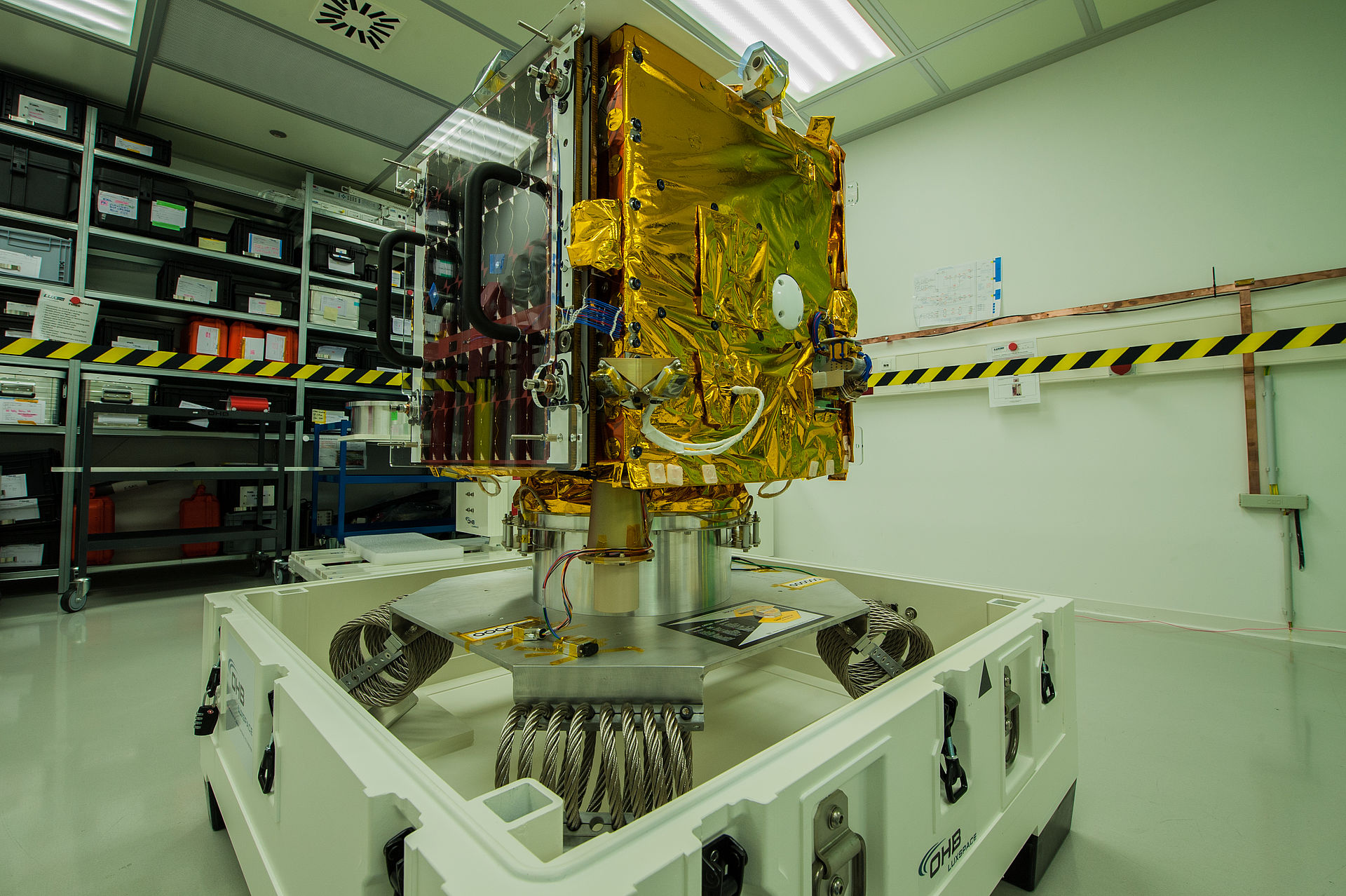Miguel, you have been working as Esail Project Manager at LuxSpace since 2017. How did you find out about us, and what makes LuxSpace (LxS) attractive as an employer for you?
Miguel Ordoñez Labrador: The space business is relatively small, and LxS is a company that covers a large part of the value-added chain in the microsatellite market. For me, LxS always stood out as an interesting option for tackling new professional challenges.
Had you already dealt professionally with microsatellites?
Before I came to LxS, I was involved primarily with earth observation satellites and other rather scientific missions. For example, I worked on Sentinel 3 – the satellites are a part of the Copernicus programme and, among other things, are tasked with observing the oceans by, for example, measuring the colour and temperature of the ocean’s surface. So I hadn’t participated in microsatellite projects prior to my work with LxS, but I did have extensive experience in ESA-related space missions, and this was exactly what LuxSpace was looking for. My experience in those missions have proven very useful when it comes to squaring up to the challenges and possibilities of microsatellites.
What is a microsatellite?
A microsatellite is able to provide most of the services other bigger satellites do, but with lower development, production, launching and operational costs. Another important aspect is the shorter time to market, which means that microsatellites generally incorporate the latest technologies. Then there is also the suitability of microsatellites for use in a constellation. Among other things, that boosts reliability. If one satellite fails, others can compensate for it. ESAIL was actually conceived as a demonstration mission for a future satellite constellation.
In your opinion, what advantages do microsatellites hold in comparison to large satellites?
Microsatellites are built for different purposes than big satellites, so it’s a little unfair to compare the two. Microsatellites are intended to fill a specific market niche that is characterised by affordable and agile access to special space services for a broader public. In other words, short development times and tailor-made services at moderate cost are the biggest advantages of microsatellites.
You took over the ESAIL project at a point when it was already well underway. That was surely a challenge. How did you manage to find the right way to get started?
My previous experience in the space sector certainly played a decisive role in my familiarisation with ESAIL. The rest is down to hard work, active and frequent communication and one or two sleepless nights. (laughs) Moreover, the team were very quick to respond and both supportive and patient when I arrived. They helped me to understand the most important aspects of the project and explained the current status of the project to me. They made it easy for me to begin doing productive work quickly.
Now you’ve been leading ESAIL for nearly three years. What was your most exciting task thus far?
For me, the most exciting project phase began with the assembly of the hardware. In the process, a satellite undergoes a wide range of test campaigns and the results of these tests, for example, EMC tests or vibration tests, show whether or not you have done good work. The environmental test campaign that we concluded a few weeks ago was very successful. The satellite responded nominally. That showed us we were correct with the results of the preceding extensive studies and had done good preliminary work. Cooperation with our suppliers has also contributed decisively to this successful result. Above all, however, the team here at LuxSpace is highly dedicated and competent; none of this would have been possible without them.
How many people work for ESAIL at LuxSpace?
The number of Esail employees depends partly on the project phase. On average, however, the project has required the participation of more than 30 engineers in various areas to bring it to the point where we are today.
Esail passed the space simulation test and the vibration test. What are the next steps up to launch?
After completion of the environmental campaign and the final integrated system test, which has demonstrated that the satellite complies with the mission profile, the satellite has been transported to the launch site in Kourou. At the launch site, it will undergo final inspection and be mated to the booster. Then Esail is ready for launch.
exactEarth and Arianespace have already signed the contract for transportation of the satellite into space. When and from where will Esail be launched?
The launch itself is currently slated for this March.
What task is ESAIL meant to perform?
ESAIL is carrying an AIS payload. AIS stands for Automatic Identification System and is a mandatory international communications system for navigation pursuant to the provisions of the SOLAS (Safety of Life at Sea) Convention adopted by the International Maritime Organisation (IMO). In short, AIS is a collision avoidance system for ships. ESAIL will collect and relay the AIS signals of ships at sea in order to track position, speed and other vessel-related information such as the name or identity of the ship.













